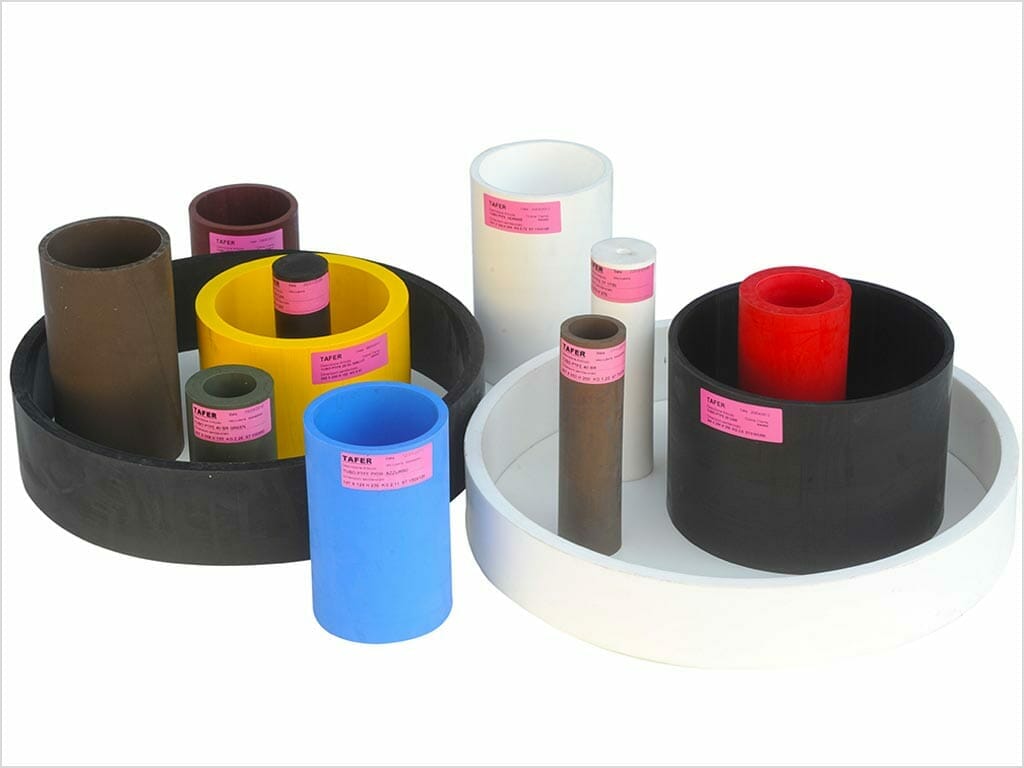PTFE Processing: Top Reliability
The abbreviation PTFE is a simplified acronym for polytetrafluoroethylene, a substance that is quite expensive but has excellent properties for the industrial sector.
It is a material that replaces other simpler polymers that do not withstand the action of aggressive agents or corrosive substances. It is therefore used for making drums and containers, as well as for products exposed to high temperatures, since Teflon, another name for PTFE, is not afraid of high temperatures being exceeded.
Let us therefore see what its characteristics are and how they can best be exploited in various areas, to achieve top reliability.
WHAT PTFE IS
One of the best features of PTFE is the chemical bond between carbon and fluorine.
This makes the atoms very stable, making the physical and chemical properties consistent over time.
Teflon is prized first and foremost for its ability to withstand very high temperatures, finding wide application in a variety of industries operating with high heat machinery.
Moreover, it is a material that is not afraid of external and climatic stresses, withstanding climatic changes such as frost, heat and humidity.
PTFE is very resistant to chemical aggression and therefore does not allow itself to be permeated by other substances.
For this reason, it is an ideal material for making containers and drums, which are then recycled and cleaned at high temperatures without any changes in shape or consistency.
The surface of objects made of PTFE is decidedly slippery, so that no chemicals can corrode on contact.
The discovery of PTFE dates back as far as 1938, and even today, it continues to be one of the materials most frequently used in all kinds of industries, due to its perfect application requirements.
Another very useful property is its resistance to radiation and light, which does not change the internal structure of the material and its natural chemical and physical characteristics.
THE PROPERTIES OF PTFE
PTFE is a material with optimal characteristics, which are maintained over time and are not altered by external agents.
– Low adhesion
The first peculiarity of the material is a very low surface energy, which prevents water and liquids from penetrating into the interior and tertiary chemicals from affecting and corroding the exterior of the object.
In this way, any item made from such a material is protected from moisture and water stagnation, and lasts longer.
– Suppression of environmental interference
Whatever the external interference, PTFE is best able to withstand heat or frost, as well as microorganisms and external chemicals.
We are talking about a material that is not afraid of degradation and lasts a long time withstanding UV and radiation exposure.
– Lack of environmental contamination
PTFE is not a substance that pollutes and contaminates the environment with its particles; therefore, it can also be used inside industrial plants without danger to employees working inside.
– Resistance to high temperatures and corrosion
PTFE is not afraid of high temperatures and can be washed and sanitised without the danger of losing its shape and consistency.
This characteristic goes hand in hand with corrosion resistance, which allows the substance to be used together with other potentially aggressive substances without any problems.
THE CHEMICAL CHARACTERISTICS OF PTFE
Compared to all chemical reagents we are currently familiar with, PTFE is completely inert, withstanding the attack of any aggressive substance except alkali metals, which are still in an elemental state.
With respect to high temperatures, it withstands exposure up to 300 degrees, which is higher than many other chemical compounds used in industry, greatly widening its application in all sectors.
THE PHYSICAL CHARACTERISTICS OF PTFE
As mentioned, PTFE has very low adhesion and a rather low coefficient of friction, allowing water and other substances to slide off its surface, which is thus never affected.
Moreover, its elongation to breakage is well over 100%, with a rather high shrinkage capacity.
THE ELECTRICAL CHARACTERISTICS OF PTFE
PTFE has very good dielectric properties and therefore acts as a good insulator with regard to high temperatures and surrounding humidity.
Exposure to weathering also does not alter the material’s composition, as does exposure to rays of various kinds, making the material also useful for the manufacture of medical products.
By adding chemical additives, it is then possible to enhance these peculiarities of the product, thus increasing its resistance to compression, elongation, expansion and hardness.
Turn to a serious professional like Tafer for PTFE processing, which has been working with this material for 30 years, to provide customers with a useful compound for use in any industrial field with excellent results.


